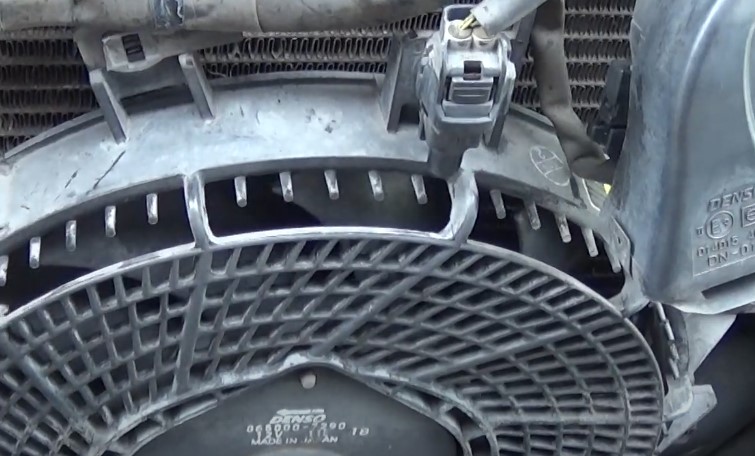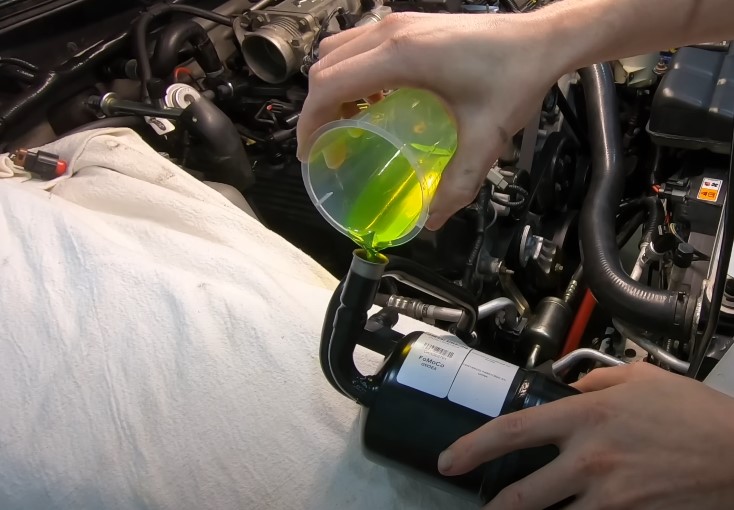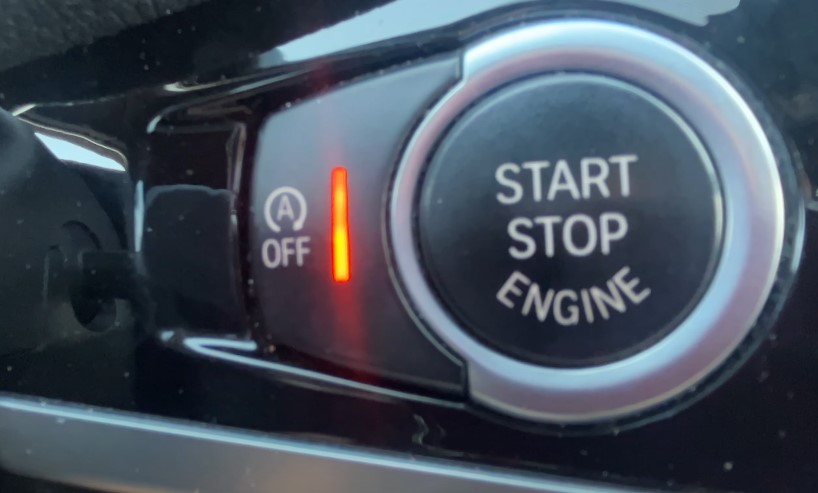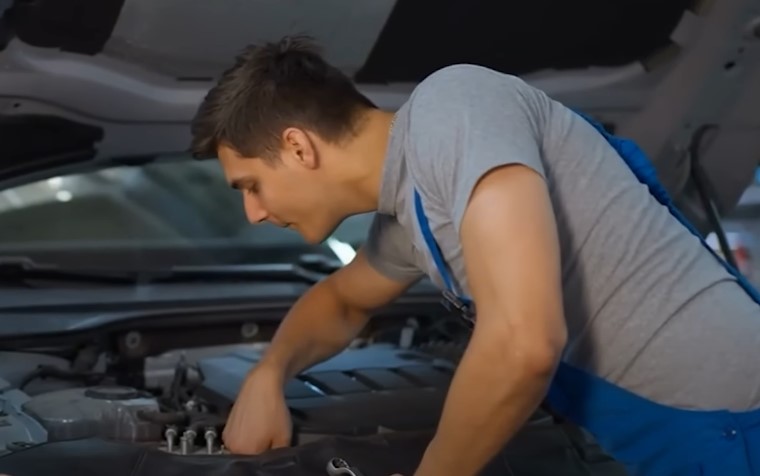It’s 90 degrees outside, you’re stuck in traffic, and your car’s air conditioner suddenly stops blowing cold. Then, just as the light turns green and you start moving again, that sweet chill comes back.
If your AC only works when driving, you’re not imagining things. It’s a common issue, and it usually has a specific cause tied to how the AC system is designed to operate.
Let’s get into the real reasons this happens, how you can diagnose it yourself, what repairs might cost, and when it’s best to hand the keys over to a pro.
Key Highlights
- AC blowing cold only while driving often points to condenser fan, refrigerant, or compressor issues.
- Low refrigerant, dirty condensers, or weak blower motors are common culprits.
- Newer cars with start-stop systems may pause AC at idle by design.
- Basic checks (fan spin, refrigerant level, airflow) can help before seeing a mechanic.
1. Condenser Fan Isn’t Working

When you’re idling, the fan is supposed to keep air moving over the condenser. If it fails, the system can’t cool the refrigerant effectively.
What You Might Notice
- Cold air while driving, warm air at idle
- Engine starts to run hotter than usual
- No fan noise when AC is running
What to Do
- Turn on the AC, pop the hood, and check if the fan near the radiator is spinning
- If not, inspect the fuse and relay
- If fuses and relays are good, the fan motor could be dead
Repair Costs
- Fuse or relay: ~$15
- Fan motor replacement: $300-$425
2. Low Refrigerant Levels
Refrigerant carries heat away from the cabin. If it’s low, cooling becomes weak – especially at low engine speeds.
What You Might Notice
- AC blows warm when idling, cold when driving
- Hissing sounds near AC lines
- Oily residue around AC fittings (sign of leaks)
What to Do
- Use a pressure gauge to check refrigerant levels
- Recharge with a DIY kit if you’re comfortable, but avoid overfilling
- Best option: have a mechanic find and fix any leaks, then refill
Repair Costs
- DIY recharge kit: ~$32
- Professional recharge: $150-$300
- Leak repair: $150-$800 depending on severity
3. Condenser Is Clogged or Blocked

Dirt, bugs, and leaves can pile up on the condenser fins, blocking airflow. That’s a big problem when your car’s not moving.
What You Might Notice
- Reduced cooling, especially when stopped
- Visible grime on the front of the condenser
- Cooling improves while driving
What to Do
- Check the condenser grille for buildup
- Clean gently with a soft brush or low-pressure air
- Replace the condenser if internal blockages are suspected
Repair Costs
- Cleaning: free to minimal
- Replacement: $450-$950
4. AC Compressor Is Weak or Failing
The compressor is the heart of the AC system. A worn or failing one might not build enough pressure at idle but still push refrigerant properly while driving.
What You Might Notice
- Loud noises like rattling or grinding near the compressor
- Warm air when stopped, cold air at higher RPMs
- Compressor clutch not engaging or clicking
What to Do
- Listen for compressor clutch clicking when AC is turned on
- Look for erratic performance at idle
- Consider replacing the clutch or the full compressor depending on the issue
Repair Costs
- Compressor replacement: Average $750 (Parts: $200-$900 / Labor: $200-$500)
5. AC Pressure Switch Is Malfunctioning
The pressure switch controls whether the compressor turns on, based on refrigerant pressure. A faulty one might shut the system off when it shouldn’t.
What You Might Notice
- AC cuts in and out randomly
- Compressor doesn’t engage reliably
What to Do
- Test the switch with a multimeter
- Check pressure readings to rule out other problems
Repair Costs
- Replacement: ~$150
6. Blower Motor or Resistor Is Failing
Even if the AC is producing cold air, a weak blower won’t push it into the cabin efficiently. Natural airflow from driving might make it seem like the AC works better when moving.
What You Might Notice
- Weak airflow at idle, stronger while driving
- Blower only works at certain speeds
- Clicking or whining noises from inside the dash
What to Do
- Test airflow on all fan settings
- If air only flows on high, the resistor may be bad
- If airflow is weak across all settings, the motor could be failing
Repair Costs
- Blower motor: $200-$400
- Resistor: $50-$100
7. Normal Start-Stop Behavior

Some newer cars shut the engine off at red lights to save fuel. That can also shut down the AC compressor – if it’s engine-driven.
What You Might Notice
- AC stops cooling when the engine cuts off
- Comes back on as soon as you start moving
What to Do
- Check if your car has start-stop technology
- If so, and you’re bothered by it, some cars let you disable it via a dashboard button
Repair Costs
- None
8. Engine Is Overheating
If your engine is running hot, the AC system may be affected, since both rely on proper coolant flow and radiator performance.
What You Might Notice
- Temperature gauge creeping into the red
- Steam under the hood
- Weak AC, especially at idle
What to Do
- Check coolant levels
- Look for visible leaks or cracked hoses
- If overheating continues, get a mechanic to check the thermostat or water pump
Repair Costs
- Coolant top-off: minimal
- Water pump: $200-$500
- Thermostat: $150-$230
Why Your Car’s AC Acts Up at Idle
View this post on Instagram
Modern vehicle AC systems are built around a balance of airflow, engine power, and refrigerant pressure. When everything’s in sync, you get consistently cool air whether you’re parked or cruising on the highway. But when the AC only cools while driving, it usually means one thing: something isn’t keeping up when the engine is idling. Here’s the breakdown of how your AC works:
Key Components in Play
- Compressor: Pressurizes refrigerant and circulates it through the system.
- Condenser: Removes heat from the refrigerant, located just behind the front grille.
- Condenser Fan: Pulls air through the condenser when the car isn’t moving.
- Evaporator: Cools the cabin air before it enters the vents.
- Refrigerant: The chemical fluid responsible for absorbing and releasing heat.
- Blower Motor: Pushes the cooled air into your car’s interior.
When your car is moving, wind naturally flows over the condenser, helping cool things down. But when you stop, the condenser fan and compressor have to do all the work. If either one can’t keep up, your AC performance drops off fast.
Quick DIY Diagnostic Checklist
If you’re comfortable getting your hands a little dirty, run through these checks before booking an appointment:
- Condenser Fan: Is it spinning when the AC is on? If not, check the fuse or relay.
- Refrigerant Level: Use a pressure gauge to check. Too low? Could be a leak.
- Condenser: Dirty or blocked fins? Gently clean the front.
- Blower Motor: Try all fan speeds. Weak or noisy? Could be motor or resistor.
- Compressor Clutch: Turn on the AC and listen for a click under the hood.
- Engine Temp: If it’s running hot, that’s likely affecting your AC too.
If any of these steps feel beyond your comfort zone, it’s totally fine to leave it to the pros.
When It’s Time to See a Mechanic

Here’s when you should get professional help:
- You find signs of a refrigerant leak (oily residue, hissing)
- The compressor or condenser needs replacing
- There are wiring or electrical faults (pressure switch, fan relays)
- Your car is overheating
- You’ve tried basic fixes and the AC still isn’t working at idle
A full AC diagnostic usually runs $50-$150. It can save you a lot of guessing and may even catch an issue before it becomes more expensive.
How to Keep Your AC in Top Shape
A few simple habits can go a long way in keeping your AC reliable:
- Run the AC weekly: Even in winter. Keeps seals lubricated and prevents leaks.
- Change the cabin air filter: Every 12,000 to 15,000 miles. It helps with airflow.
- Recharge the system: Every two years or as needed. Keeps cooling strong.
- Clean the condenser: Especially before summer or if you drive in dusty areas.
- Monitor engine cooling: A healthy cooling system supports the AC system too.
Repair Cost Summary
Here’s a quick table to give you an idea of what you might spend:
| Problem | Estimated Repair Cost |
| Condenser Fan (Relay/Fuse) | ~$15 |
| Condenser Fan Motor | $300-$425 |
| Low Refrigerant Recharge | $150-$300 |
| Leak Repair | $150-$800 |
| Condenser Cleaning | Minimal |
| Condenser Replacement | $450-$950 |
| AC Compressor | ~$750 average |
| Pressure Switch | ~$150 |
| Blower Motor | $200-$400 |
| Blower Resistor | $50-$100 |
| Engine Coolant Top-Up | Varies (often inexpensive) |
| Water Pump | $200-$500 |
| Thermostat | $150-$230 |
| Start-Stop AC Pause | Normal operation, no fix needed |
Final Thoughts
When your car’s AC only works while driving, it’s frustrating – and sweaty. Most of the time, the issue comes down to something like a non-working condenser fan, low refrigerant, or a clogged condenser.
Other culprits include a weak compressor, faulty pressure switch, or even a failing blower motor. And in newer cars, it might just be your start-stop system doing its job.
Start with the basics. If you’re mechanically inclined, a few quick checks might save you a trip to the shop. But if it’s pointing to leaks, overheating, or deeper electrical problems, don’t hesitate to let a trusted mechanic take over.
Either way, you’ll breathe a lot easier once cold air starts flowing again – no matter what the speedometer says.
